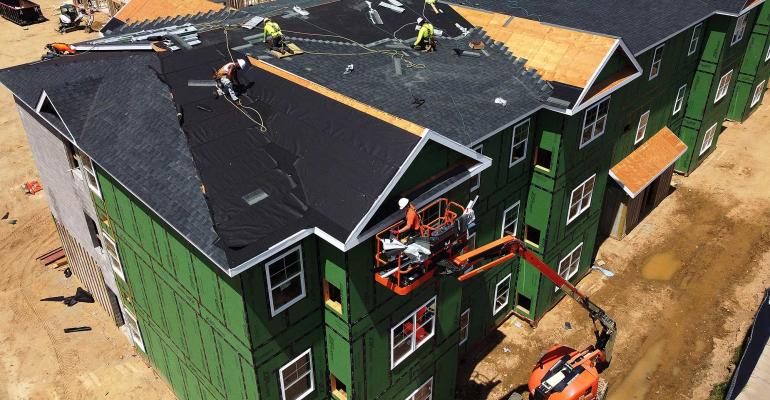A robust pipeline of new apartments planned prior to the COVID-19 pandemic has continued to deliver projects throughout 2020. To attract tenants to properties at a time when many Americans are facing economic uncertainty and others are considering whether to leave cities and move to the suburbs, owners are now offering generous concessions, including months of free rent.
“In the urban core, some of the concessions are scary,” says Ryan Davis, chief operating officer for Witten Advisors, an apartment research firm based in Dallas. “Not just three months of free rent, but free parking too.”
Concessions are broadly available through the apartment market. The share of listings on real estate Zillow offering concessions rose to 30.4 percent in July up from 16.2 percent in February.
According to the site, of the six types of concessions it tracks, periods of free rent are the most common concession (90.8 percent), with periods spanning from two weeks to up to wo months. Other concessions include reduced or waved deposits (9.1 percent) and gift cards (6.6 percent).
For new buildings, the offers are particularly generous. Related Companies, for example, is offering two months free rent, one year of free internet, $1,500 towards moving expenses and the equivalent of one month’s rent towards any broker fees on some units in New York City.
New apartment properties in today’s market are also opening with a much higher percentage of their apartments still vacant than is typical. Usually property managers can find renters willing to sign leases for about a third of the new apartments at a property by the end of the first quarter after the building has officially opened. But the apartment properties that opened in the second quarter of 2020 were still 71 percent vacant at the end of June, according to data from CoStar. That’s up from 64 percent the year before, for apartments that had opened in the second quarter of 2019.
Despite the supply from new apartments, the overall vacancy rate for the sector has not moved much.
Just 4.1 percent of exiting apartments were vacant in the second quarter of 2020. That’s only a fraction of a percentage point higher than 3.9 percent the year before, according to Moody's Analytics REIS. In contrast, new apartments were 35.8 percent vacant in the second quarter of 2020, up from 33.4 percent the year before, according to the firm.
“Vacancy rates increased more in new properties than in existing properties,” says Barbara Byrne Denham, senior economist at Moody's Analytics REIS.
The crisis has been especially difficult in the downtown areas in the top six apartments markets including New York City and San Francisco. These are some of the places where developers had been most eager to build new luxury apartments. The ones performing better include units with outdoor space, but that's not something that's usually available on all units.
“The pandemic is pushing people out of the urban cores of the five or six top urban centers,” says John Sebree, senior vice president and national director of Marcus & Millichap's Multi Housing Division, working in the firm's Chicago office.
In response, property managers are offering months of free rent to potential residents. “If you are leasing up a property you are going to offer the very nice concessions,” says Jeanette Rice, Americas head of multifamily research for CBRE.
These concessions are deepest in top downtowns. For example, new apartment projects in Manhattan might offer as much as two or three months of free rent to attract renters, according to Davis. In contrast, a new property in Westchester County, outside of New York City, might offer just one month. These renters shopping in the suburbs seem to be interested in renting larger apartments at lower prices than they were able to find in the most expensive downtown areas.
“There is a preference for space right now,” says Davis. “Uncertain about their income, renters would like a lower price.”
New developments are not suffering as badly in every downtown. In many smaller, less expensive cities, new apartment buildings downtown are renting almost as well as new apartments in the suburbs. “In downtown Columbus, for example, they are doing well,” says Davis. “But I don’t think they are doing as well as suburban areas.”
Overall, demand for apartments in urban areas overall is roughly 60 percent as strong as it was before the COVID-19 pandemic. Demand for apartments in suburban areas has been much less damaged by the pandemic. It between 70 percent and as 90 percent of what it was before the crisis, according to Davis.
“Product in the suburbs is leasing up at around the same rate as product in cities, but this is a change in that the suburbs normally lease up slower than urban product,” says Andrew Rybczynski, senior consultant at CoStar Portfolio Strategy.
“Merchant builders who have opened properties in secondary markets and suburban locations are meeting their pro forma objectives,” says Sebree.





